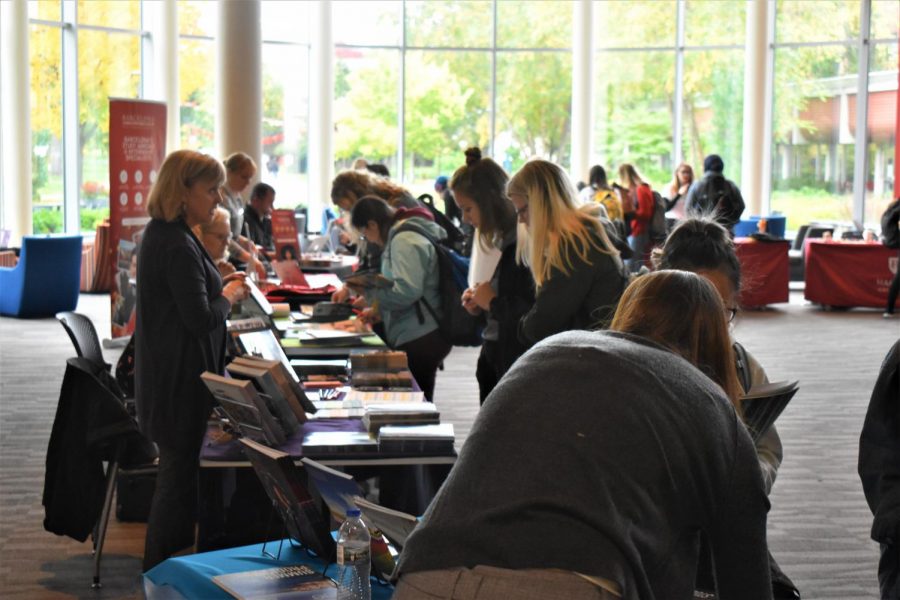Study-away’s changing face
Hamline is adding new study-away programs while changing many existing ones.
Students look through study abroad opportunities made available through several outside agencies at the Study Away Fair on Oct.10.
October 16, 2019
From the revamping of the Global Engagement Center’s (GEC) longtime worldwide partnerships to the establishment of new ones, there is a whirlwind of change in the air for study away programs at Hamline, as students may have learned at the recent Study Away Fair.
“Over the past 18 months, we’ve added on 21 new international partners, all of them exchanges,” said Leila DeVriese, Global Studies professor and the GEC’s director. “We have a wider variety of locations that our students can go to and that we can receive students from.”
New domestic options are also available or soon to be available, such as the semester-long Oregon Exchange and an in-development May-term in New York. On an international scale, DeVriese says that the GEC is moving toward offering more exchange-based study-away programs, rather than the direct-enroll programs that were common in the past.
“Direct-enroll is where our students go there, but they don’t send us students,” DeVriese said. “With exchanges… there’s no money exchanged between the universities, so what you would usually pay Hamline to go to Hamline using your aid and scholarships, you would be paying the same thing to go to Vienna.”
One program that is shifting toward the exchange model is the popular Hamline in York experience, which is usually offered over the fall semester. Rachel Winter ‘16, an anthropology graduate, credits this program with determining her post-grad trajectory.
“I loved my study abroad experience so much… that I did my master’s degree [at the University of York],” Winter said. She is currently pursuing a doctorate in archeology in the Netherlands. “I became reacquainted with a friend from study abroad who is now my husband, I have had the opportunity to work with and learn from some really inspiring mentors… and my master’s research helped to qualify me for the Ph.D. course I am now on.”
Currently, the York trip is led by a faculty member, from whom Hamline students take one course in addition to their regular classes at the university, but this will not be the case in an exchange-based setup.
“Hamline technically has an apartment [for the professor] that we are renting for the entire year, which is not a… cost-effective strategy… when students are only there for one semester,” Global Engagement Specialist Kate Meyer said. “The model doesn’t make sense when we’re trying to be the best stewards of students’ money.”
DeVriese hopes that by transitioning to the exchange model, Hamline will not only be receiving students from York but will be able to return to offering the program both semesters as well, rather than just in the fall. Meyer also said that the program will be combined with other British partnerships in Westminster and Roehampton, to create a larger “Hamline in the UK” option.
Studying away need not be a large time commitment. An Irish literature and culture trip that was coordinated by Professor Kristina Deffenbacher in J-terms and May-terms past is transitioning to a spring break approach for 2020 in order to be more cost and time-effective.
“[Doing] all of the reading and writing for a 4-credit course while we’re in Ireland… has meant costly longer stays [in the past],” Deffenbacher said. “This new structure requires a 2-credit on-campus course in the first half of spring semester.”
Since assignments will be completed beforehand, students will have more exploration time while in Ireland.
The Ireland trip requires a minimum of 10 students in order to run. Students interested in it, or any other study-away program, should visit the GEC in Old Main’s basement or email them at gec@hamline.edu.



